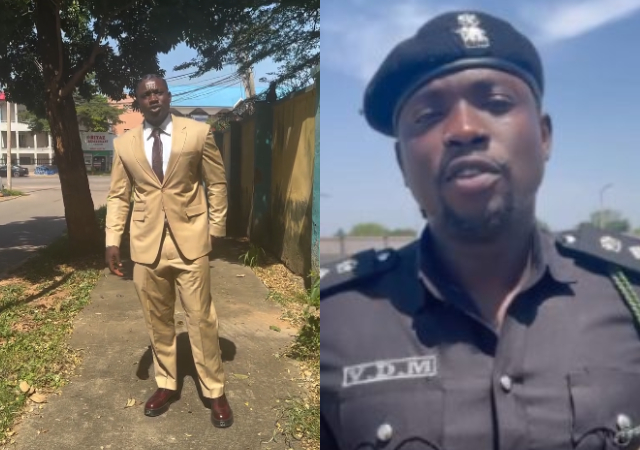Nigerian social media critic Martins Otse, widely known as Verydarkman (VDM), has formally responded to a police invitation regarding his unauthorized use of police uniforms in his content creation. The case has drawn significant attention, particularly for its unusual blend of social media activism and law enforcement concerns.
The controversy emerged after Otse appeared in videos wearing official police attire, styling himself as “CSP VerydarkMan” and claiming the role of Nigeria’s “top online police officer.” This unauthorized representation prompted an official response from the Nigeria Police Force through their spokesperson, Muyiwa Adejobi, who announced on October 26 that an investigation had been launched into the source of the police gear featured in VDM’s content.
In a dramatic response to the summons, Otse appeared in a video that marked a striking departure from his usual casual style. Dressed in a formal carton-colored suit, he announced his intention to honor the police invitation at the Federal Capital Territory police station. The social media personality was captured waiting on a sidewalk for his legal representative, demonstrating a level of seriousness that surprised many of his followers.
The self-proclaimed online activist, known for his mission to “clean up social media” through his outspoken critiques of various social issues and online sellers, explained his decision to cooperate with authorities. I was invited by the police command 2 days ago on the allegation that I used police uniforms to make a video. I am on my way now to clear my name,” he stated in his characteristic direct manner.
View this post on Instagram
This incident has sparked widespread discussion on social media, with followers noting VDM’s chameleon-like ability to adapt his persona to different situations. As one follower commented, “What I like about VDM is that he has multi personality. Sometimes he looks like a street boy, sometimes he looks humble, sometimes he looks like a pastor, some time he uses Amadioha attire. Even his enemies are confused.”
The case raises important questions about the boundaries between social media entertainment and the unauthorized use of official symbols and uniforms. The Police Force’s concern centers not just on the use of their uniform but also on the potential implications of individuals presenting themselves as law enforcement officials without proper authorization.
What makes this case particularly interesting is VDM’s approach to addressing the situation. Rather than avoiding the summons or responding confrontationally, his decision to appear in formal attire and wait for legal representation demonstrates a level of professionalism that has surprised many observers. This response has added another layer to his public persona, showing an ability to transition from his typically provocative online presence to a more formal demeanor when dealing with official matters.
The incident has also highlighted the evolving nature of social media influence in Nigeria, where content creators often walk a fine line between entertainment and potential legal issues. VDM’s case serves as a reminder of the responsibilities that come with online influence and the importance of respecting official institutions and their symbols.
Followers’ reactions to his formal appearance have ranged from humorous to supportive, with some noting the frequency of his legal encounters. One follower humorously remarked, “Your lawyer no need another client…you only don reach am…na everyday new case dey open,” highlighting the controversial nature of VDM’s online activism.
As this situation continues to unfold, it serves as a significant case study in the complex relationship between social media activism, content creation, and legal boundaries in Nigeria’s digital age. The outcome of this investigation could potentially set precedents for how similar cases are handled in the future, particularly regarding the use of official uniforms and symbols in social media content.
The incident also underscores the growing need for clearer guidelines governing social media content creation, especially when it involves the use of official symbols and uniforms. As digital platforms continue to evolve as spaces for social commentary and activism, cases like VDM’s highlight the importance of balancing creative expression with respect for official institutions and their protocols.




